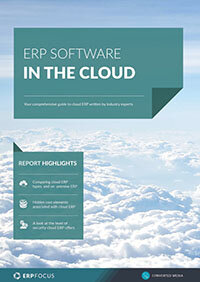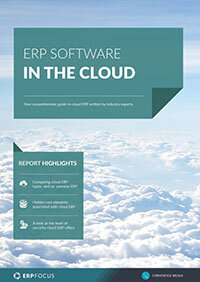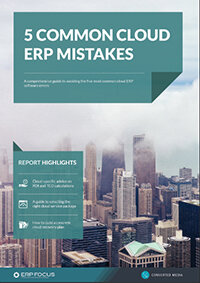Why cloud ERP is the future of enterprise technology
In a January ’19 report relating to the future of cloud computing offered by Forrester Research, analyst Andrew Hewitt suggests that enterprise technologists should begin to plan for the development of apps and devices in terms of homogenous, rather than previously disparate, operating environments. While I certainly agree with the premise, it also begs a follow-on question which is; ‘in order to accommodate this thinking, what mechanisms can be readily applied without breaking the bank’?
Well, in short, there is really only solution robust enough to handle these needs: ERP - more specifically - cloud ERP. Consequently, let’s take a look at this assertion from the emergence of cloud solutions, and consider what it all might mean further down the road.
The rise of cloud ERP
To go back to the beginning, it should be remembered that today’s ERP platforms are largely derived from the particular needs of manufacturers in the 60’s. At that time, automated factories were becoming more prevalent, largely driven by the auto and aerospace sectors. As a result, the need to accelerate supply-chain efficiencies in order to produce and deliver things more quickly called for new ways to handle and measure materials-based operations. This, in turn, triggered the genesis of today’s resources-based technologies in the form of early-stage Materials Requirement Planning doctrines; also known as MRP.
By the 70’s MRP platforms were largely accepted by large-scale enterprises but were not generally accessible to smaller manufacturers primarily due to cost and maintenance elements related to the needs of mainframe computing. However, in 1972 a German concern called SAP was founded on the basis of a singular goal of translating the advantages of big company MRP to smaller business concerns.
Shortly afterward, Steve Wozniak and Steve Jobs launched the first Apple 1 four years later, and this confluence of technical efforts ultimately gelled in the early 80’s with the advent of the mini/micro-computer along with the emergence of new business software platforms including evolved MRP variants plus a refined off-shoot called Materials Resource Planning II (MRP II), a host of financial platforms; and interestingly, the first appearance of Ashton-Tate’s Relational Database Management System (RDBMS). And so the evolution continued until the millennium turned.
Shortly afterward, the market began to call for more and more processing power, global operations became the norm rather than the exception, and these requirements began to be additionally pressured by the emergence of mobility on both the B2B and B2C sides of most enterprises, along with other innovations such as the emergence of SaaS, PaaS, and IaaS products. Consequently, legacy ERP evolved to become ERP II and these platforms became more operational transparent leading economies of scale to kick in, thereby fostering all kinds of new ERP-like systems appearing across all industries, and more importantly, the application of cloud-based systems.
What we can expect to see from the future of cloud ERP?
In terms of cloud ERP, a host of advantages are in the offing. Some of these elements involve resources platforms as they become more universal, while communications network resources management will undoubtedly evolve from where it is today, to something bigger, better and smarter such as holistic communications involvement of AI and/or mesh networking.
However, each tier in this constellation suggests common operating goals driven by anytime processing, supported by anywhere delivery, protected by fully-integrated, zero-downtime security systems. While these operating philosophies are being largely mandated by the market itself, the guiding resolutions of these requirements have become increasingly dependent on the intrinsic mobility of the cloud as a critical lodestone.
As users have become more dependent on clusters of devices ranging from smartphones to smart glasses, more resource-related management capabilities have emerged because of the diffuse nature of today’s global communications needs. Consequently, the cloud is really the only place where everyone can transparently hope to interact in real-time while maintaining some sense of operating security; and the only way to herd all of those cats simultaneously is to apply ‘some kind’ of resources-based management doctrine, backed up by granular sets of software platforms.
As a result, ERP is not going anywhere and is more likely to grow in criticality rather than the inverse. Of course, no one can really foresee the future, but nevertheless, it should be an interesting ride, to say the least.
Free white paper

ERP Software in the Cloud
Get your free guide to cloud ERP software

Featured white papers
-

Five common cloud ERP mistakes
Get your comprehensive guide to avoiding the five most common cloud ERP errors
Download -

Related articles
-

Why you shouldn't underestimate cloud ERP consultant costs
Make sure to take the cost of a consultant into account when planning your cloud ERP budget
-

CMMC Compliance: What Aerospace and Defense Manufacturers Need to Know
Key insights on CMMC compliance, deadlines, and securing DoD contracts with CMMC 2.0 certificatio...
-

Cloud ERP vs on-premise ERP: an objective comparison
Are you choosing between cloud ERP and on-premise ERP? This balanced guide will help

